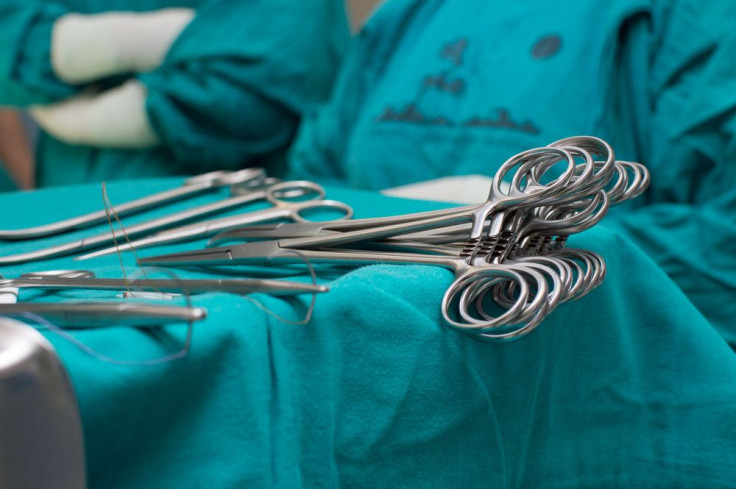Staples Or Sutures To Close A C-Section? The Future For Wound Sealing May Hold Other Possibilities

Among women who undergo a cesarean section (C-section) during childbirth, between three and six percent experience a post-cesarean wound infection due to the surgical incision. Although this may seem like a trivial proportion of new mothers, the health complications associated with this bacterial infection can be extremely detrimental to the health of a woman who has just given birth. A study published in Obstetrics and Gynecology suggests that closing the wound from a C-section with sutures rather than staples can reduce the rate of complications by 57 percent.
“A woman undergoing a C-section should ask the doctor what they’re going to use,” Dr. Vincenzo Berghella, a professor of obstetrics and gynecology at the Sidney Kimmel Medical College in Philadelphia and one of the study’s authors, told NYTimes. “If they hear ‘staples,’ they should question that. It’s clear that sutures are going to cause fewer wound complications.”
Lead researcher from Geisinger Health System in Danville, Pa., Dr. Dhanya A. Mackeen and her colleagues recruited 746 pregnant women undergoing C-sections at three hospitals in the United States between 2010 and 2012. Women participating in the study were randomly assigned to two groups, 370 of whom received sutures and 376 of whom received staples to close a low-transverse skin incision. Researchers excluded women with diabetes and other serious health conditions while including women with high BMI, those having their first C-Section, and a repeat C-section. Women who underwent a C-section at 23 weeks of gestation were followed for wound complications including infection, hematoma seroma, or a wound separation of one centimeter or longer.
By the end of the study 58 of the women who underwent a C-section experienced complications associated with closure of their wound. Just under five percent of these women were included in the suture group while 10.6 percent were in the staple group. Closing a wound with sutures took around nine minutes longer and staples are regarded as cost-effective. The research team concluded that receiving a suture closure following a C-section can reduce a woman’s risk of wound complications by 57 percent compared to a staple closure.
According to the Centers for Disease Control and Prevention, 32.8 percent of all childbirths in the U.S. are delivered via C-section, totaling 1,296,070 cesarean deliveries each year. Using sutures or staples to close the wound left by a C-section has long been debated among members of the obstetrics community. A recent technological development dubbed Photochemical Tissue Bonding (PTB) could prove to be the future of wound closure, surpassing both sutures and staples. Using light-activated protein crosslinking technology, a dye is applied to tissue surfaces before it is exposed to visible radiation that is incapable of thermal damage. The result is a water-tight bond produced by additional glues and proteins.
So maybe one day, thanks to innovation, both sutures and staples will become obsolete.
Source: Adeeb K, Fleisher J, Mackeen D, et al. Suture Compared With Staple Skin Closure After Cesarean Delivery: A Randomized Controlled Trial. Obstetrics and Gynecology. 2014.



























